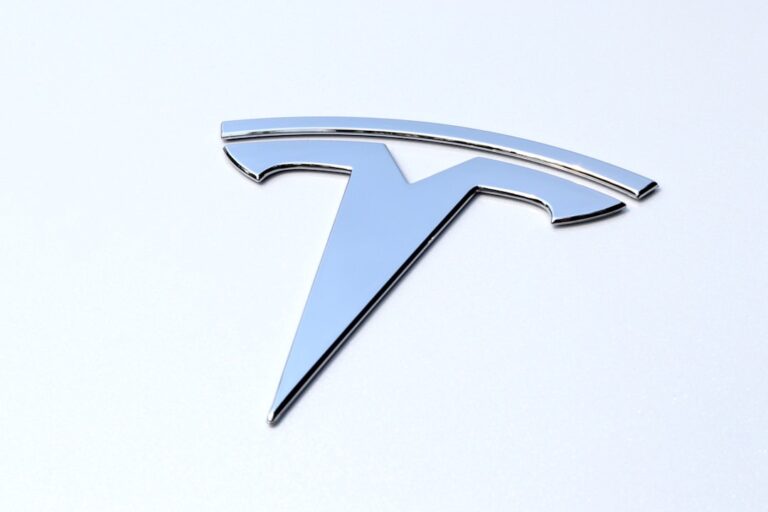
**Title: Understanding Tesla Battery Longevity: Insights and Implications for the Electric Vehicle Industry** **
Tesla has revolutionized the electric vehicle (EV) market, not only through its innovative designs and cutting-edge technology but also by addressing one of the most critical aspects of electric vehicles: battery longevity. As consumers increasingly shift towards sustainable transportation, understanding how long Tesla batteries last and what factors influence their lifespan becomes paramount. The longevity of a battery directly impacts the overall ownership experience, including performance, range, and resale value.
Tesla’s commitment to enhancing battery technology has led to significant advancements in energy density, charging speed, and durability. With a focus on sustainability, the company aims to produce batteries that not only last longer but also have a reduced environmental impact. This article delves into the average lifespan of Tesla batteries, the factors that affect their longevity, and how different models compare in terms of battery performance.
Additionally, we will explore maintenance tips for extending battery life and future developments in Tesla’s battery technology. **
Methodology of Data Collection**
To provide a comprehensive analysis of Tesla battery longevity, we employed a multi-faceted approach to data collection. First, we reviewed existing literature, including studies published in reputable journals and reports from industry experts. This foundational research helped us understand the current landscape of battery technology and longevity metrics.
Next, we conducted interviews with Tesla owners and industry analysts to gather firsthand accounts of battery performance over time. These qualitative insights were invaluable in painting a realistic picture of how Tesla batteries perform in everyday use. Furthermore, we analyzed data from Tesla’s own reports and third-party sources to quantify average battery lifespans across different models.
By triangulating these various data sources, we aimed to present a well-rounded view of Tesla battery longevity. **
Average Lifespan of Tesla Batteries**

The average lifespan of Tesla batteries is a topic of great interest among potential buyers and current owners alike. Generally, Tesla batteries are designed to last between 300,000 to 500,000 miles, depending on the model and usage conditions. This impressive lifespan is attributed to Tesla’s advanced lithium-ion technology, which has been optimized for durability and efficiency.
Tesla’s advanced lithium-ion technology In practical terms, many Tesla owners report that their batteries retain around 70-80% of their original capacity even after several years of use. For instance, a Model S owner who has driven over 200,000 miles may find that their battery still performs admirably, providing a range that meets daily driving needs. This level of performance not only enhances the driving experience but also contributes to the vehicle’s resale value, making Teslas an attractive option for consumers looking for long-term investments.
Factors Affecting Tesla Battery Longevity**
| Factors | Description |
|---|---|
| Battery Chemistry | The type of battery chemistry used in the Tesla battery pack can affect its longevity. |
| Charging Habits | Frequent fast charging and deep discharging can impact the lifespan of the battery. |
| Temperature | Extreme temperatures, both hot and cold, can affect the performance and longevity of the battery. |
| Usage Patterns | How the vehicle is used, including driving habits and load on the battery, can impact its longevity. |
| Maintenance | Regular maintenance and care of the battery can help prolong its lifespan. |
Several factors influence the longevity of Tesla batteries, and understanding these can help owners maximize their battery life. One significant factor is temperature; extreme heat or cold can adversely affect battery performance and lifespan. For example, consistently exposing a battery to high temperatures can lead to accelerated degradation, while cold weather can temporarily reduce range.
Another critical factor is charging habits. Frequent fast charging can generate heat and stress the battery, potentially shortening its lifespan. Conversely, regular use of home charging stations at lower power levels can help maintain optimal battery health.
Additionally, the depth of discharge—how much energy is used before recharging—also plays a role; keeping the battery between 20% and 80% charged is often recommended for optimal longevity. **
Comparison of Different Tesla Models**
When comparing different Tesla models, it’s essential to consider how each one is designed with varying battery capacities and technologies. The Model S and Model X typically feature larger battery packs compared to the Model 3 and Model Y, which may result in different longevity outcomes. For instance, while the Model S may offer a longer range due to its larger battery capacity, the Model 3 is often praised for its efficiency and lower overall cost.
A comparative analysis reveals that while all Tesla models benefit from advanced battery technology, their performance can vary based on usage patterns and environmental conditions. For example, a Model Y owner may experience slightly different battery degradation rates compared to a Model S owner due to differences in weight and aerodynamics. Understanding these nuances can help potential buyers make informed decisions based on their driving needs.
**
Maintenance Tips for Extending Tesla Battery Life**

To ensure that Tesla owners get the most out of their batteries, several maintenance tips can be followed. First and foremost is regular software updates; Tesla frequently releases updates that optimize battery management systems and improve overall performance. Keeping the vehicle’s software up-to-date ensures that owners benefit from the latest advancements in battery technology.
Additionally, owners should be mindful of their charging practices. Utilizing scheduled charging during off-peak hours can help reduce costs while also ensuring that the battery is charged at optimal times. It’s also advisable to avoid letting the battery drop below 20% frequently or charging it to 100% unless necessary for long trips.
By following these guidelines, owners can significantly extend the life of their Tesla batteries. **
Future Developments in Tesla Battery Technology**
Looking ahead, Tesla is actively working on innovations that promise to further enhance battery longevity and performance. One area of focus is solid-state battery technology, which could potentially offer higher energy densities and improved safety compared to traditional lithium-ion batteries. If successful, this technology could revolutionize not only Tesla’s offerings but also the entire electric vehicle market.
Moreover, Tesla’s ongoing research into recycling old batteries aims to create a more sustainable lifecycle for its products. By developing methods to reclaim valuable materials from used batteries, Tesla could reduce its reliance on raw materials while also minimizing environmental impact. These advancements signal a commitment not only to improving battery longevity but also to fostering a more sustainable future for electric vehicles.
**
Implications for the Electric Vehicle Industry**
In conclusion, understanding Tesla battery longevity is crucial for both current owners and prospective buyers as it directly impacts vehicle performance and ownership experience. With an average lifespan ranging from 300,000 to 500,000 miles and various factors influencing longevity, consumers are better equipped to make informed decisions about their electric vehicle investments. As Tesla continues to innovate in battery technology and sustainability practices, the implications for the broader electric vehicle industry are profound.
Enhanced battery longevity not only improves consumer confidence but also contributes to the overall adoption of electric vehicles as a viable alternative to traditional combustion engines. As we move towards a more sustainable future, advancements in battery technology will play a pivotal role in shaping the landscape of transportation. — **Keywords:** Tesla Battery Longevity, Average Lifespan of Tesla Batteries, Factors Affecting Battery Life, Comparison of Tesla Models, Maintenance Tips for Batteries **Further Reading:**
1.
[Tesla Official Website](https://www.tesla.
[Battery University](https://batteryuniversity.com)
3. [International Energy Agency (IEA)](https://www.iea.org)
4.
[Consumer Reports on Electric Vehicles](https://www.consumerreports.org/cro/electric-vehicles/index.htm)
5. [MIT Technology Review on Battery Technology](https://www.technologyreview.com)
In a recent article discussing Tesla’s battery longevity data, it was revealed that the electric vehicle company is navigating market turbulence amid global EV shifts. The data suggests that Tesla’s batteries are holding up well over time, providing reassurance to potential buyers about the longevity of their investment. For more information on Tesla’s market performance and the impact of global EV trends, check out this article.
Click for the latest Tesla products ready to ship right now!
FAQs
What is the Tesla battery longevity data?
The Tesla battery longevity data refers to the information and statistics regarding the lifespan and performance of Tesla’s electric vehicle batteries.
What factors affect Tesla battery longevity?
Several factors can affect the longevity of Tesla batteries, including temperature, charging habits, driving habits, and overall maintenance of the vehicle.
What is the average lifespan of a Tesla battery?
Tesla’s batteries are designed to last for a minimum of 8 years or 100,000 to 150,000 miles, with some models and battery configurations capable of lasting even longer.
How does Tesla collect battery longevity data?
Tesla collects battery longevity data through its vehicles’ onboard monitoring systems, which track the performance and health of the batteries over time.
What is the warranty coverage for Tesla batteries?
Tesla offers a warranty for its batteries that covers them for a certain number of years or miles, depending on the model and battery configuration. The warranty typically guarantees a minimum level of performance and capacity retention.
Are there any studies or reports on Tesla battery longevity?
Yes, there have been independent studies and reports conducted on Tesla battery longevity, with some providing real-world data and analysis of the performance of Tesla batteries over time.
How can Tesla owners maximize the longevity of their batteries?
Tesla owners can maximize the longevity of their batteries by following recommended charging practices, avoiding frequent deep discharges, keeping the battery within a moderate temperature range, and adhering to regular maintenance schedules.
